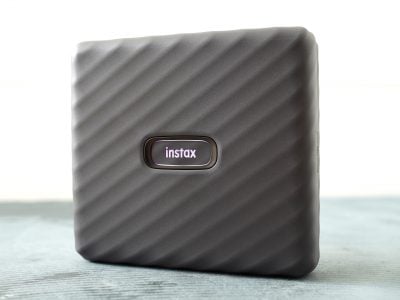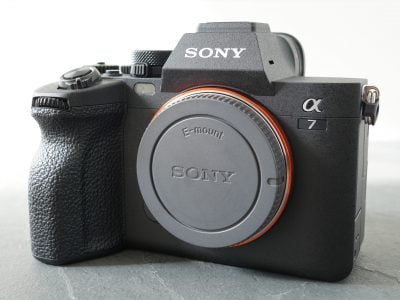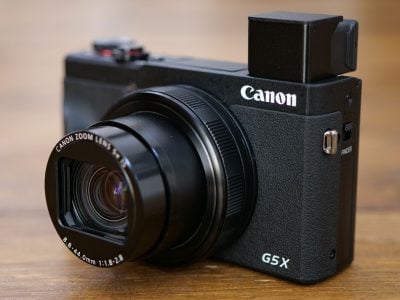Panasonic Lumix DMC-FS25
-
-
Written by Gordon Laing
Panasonic DMC-FS25 verdict
The Panasonic Lumix DMC-FS25 is a 12.1 megapixel camera with a 5x optical zoom and 3in LCD panel. It’s well-built, slim and elegant and has a range of features, including Intelligent Auto mode with scene detection and Face recognition that will make it an attractive option for those who want to get good pictures with little fuss.
Although it looks good, the camera is let down by small design flaws. The overall design doesn’t match the quality of the front panel, the tripod bush is poorly placed and the battery cover is flimsy and poorly fitting. More importantly, the camera relies on a switch to change from recording to capture mode and back which is less flexible and intuitive than a button.
The FS25 produces decent quality images with excellent definition and good colour saturation at the maximum resolution setting. Though it doesn’t have HD video, it does offer a widescreen standard definition format measuring 848×480 pixels which is a step-up from the 640×480 VGA model of some rivals.
One of the stand-out features of this camera which sets it apart from competitors like the Canon Powershot A2100 IS and Sony Cyber-shot DSC-W270 / W290 is its LCD panel which can be configured to automatically adjust to ambient light levels, and which has an additional mode that makes it more visible when the camera is held above your head – all very useful.
Compared to Sony Cyber-shot DSC-W270 / W290
With almost identical pixel counts, zoom ranges and LCD panel sizes (the W270 has a marginally smaller 2.7in screen) you’d be forgiven for thinking there’s little to tell the Panasonic FS25 and Sony W270 / W290 apart. The cameras are almost identical in size with the Panasonic just under 20 grams lighter than the Sony.
So what sets them apart? Well, first of all there’s the build quality. Panasonic has out-stlyed Sony with the FS25, but it’s looks are only skin deep and in terms of the design and functionality of both the camera controls and menu systems, the Cyber-shot DSC-W270 / W290 arguably does a better job.
There’s some differences between the two cameras in terms of image quality. Using the default settings the Lumix produces more highly colour saturated photos with higher contrast and better detail. It also came out in front in our low light / high ISO tests.
If you plan to use your compact as a backup video camera, the Cyber-shot provides higher resolution 720p HD video, outperforming Panasonic’s 848×480 pixel WVGA mode. See our Sony Cyber-shot DSC-W270 / W290 review for more details.
Compared to Canon PowerShot A2100 IS
The Canon PowerShot A2100 IS outguns the Panasonic Lumix DMC-FS25 both in the total range and reach of its zoom. But the FS25 has a wider field of view – 29mm (35mm equivalent), compared with the Canon’s 36mm.
The Lumix is slimmer than the Canon and looks more stylish, but it doesn’t share the PowerShot’s overall build quality and feels a little flimsy. Neither are the controls as accessable. The Panasonic’s reliance on switches, particularly to change from record to playback mode is, in our view, cumbersome and likely to result in some missed photo opportunities.
In terms of image quality, the Lumix compares well with the PowerShot’s crisp, well defined details, producing sharp punchy images. At the edges the Lumix loses out slighly, but for most people, this is likely to go unnoticed.
The Lumix comes out on top for video – though not quite HD, it’s best-quality 848×480 pixel WVGA mode provides a higher resolution widescreen alternative to the PowerShot’s best effort at 640×480 pixels.
One feature where the Panasonic beats the PowerShot hands down is the screen. Though the same size and with the same pixel count as the Canon, the Lumix offers Power LCD and High Angle modes which make the screen easier to see in bright sunlight and when shooting with it held above your head. See our Canon PowerShot A2100 IS review for more details.
Panasonic Lumix DMC-FS25 final verdict
The Panasonic Lumix DMC-FS25 is a stylish, slim compact that looks good, feels comfortable to hold and produces good quality images. Its 5x optical zoom includes wide-angle coverage and is well suited to general purpose photography from group shots to portraits. Features like face tracking AF and scene recognition also make it a good bet for the novices.
The FS25 is however let down a little by several minor shortcomings. The flimsy battery cover, face detection performance in low light, mode switch and up-front positioning of gimmicky scene modes in place of something more useful, all detract from what is otherwise a sound compact that takes excellent photos.
Despite that, it’s a fun camera to use and produces great quality images in most situations. The screen with its variable brightness and high-angle options also makes it great choice if you take a lot of pictures in bright sunshine or in crowds. Recommended.
|
Bad points | Scores (relative to 2009 compacts) |
 | ||
Build quality: Image quality: Handling: Specification: Value:
Overall: |
16 / 20 16 / 20 17 / 20 15 / 20 16 / 20
80% | |||
| ||||






